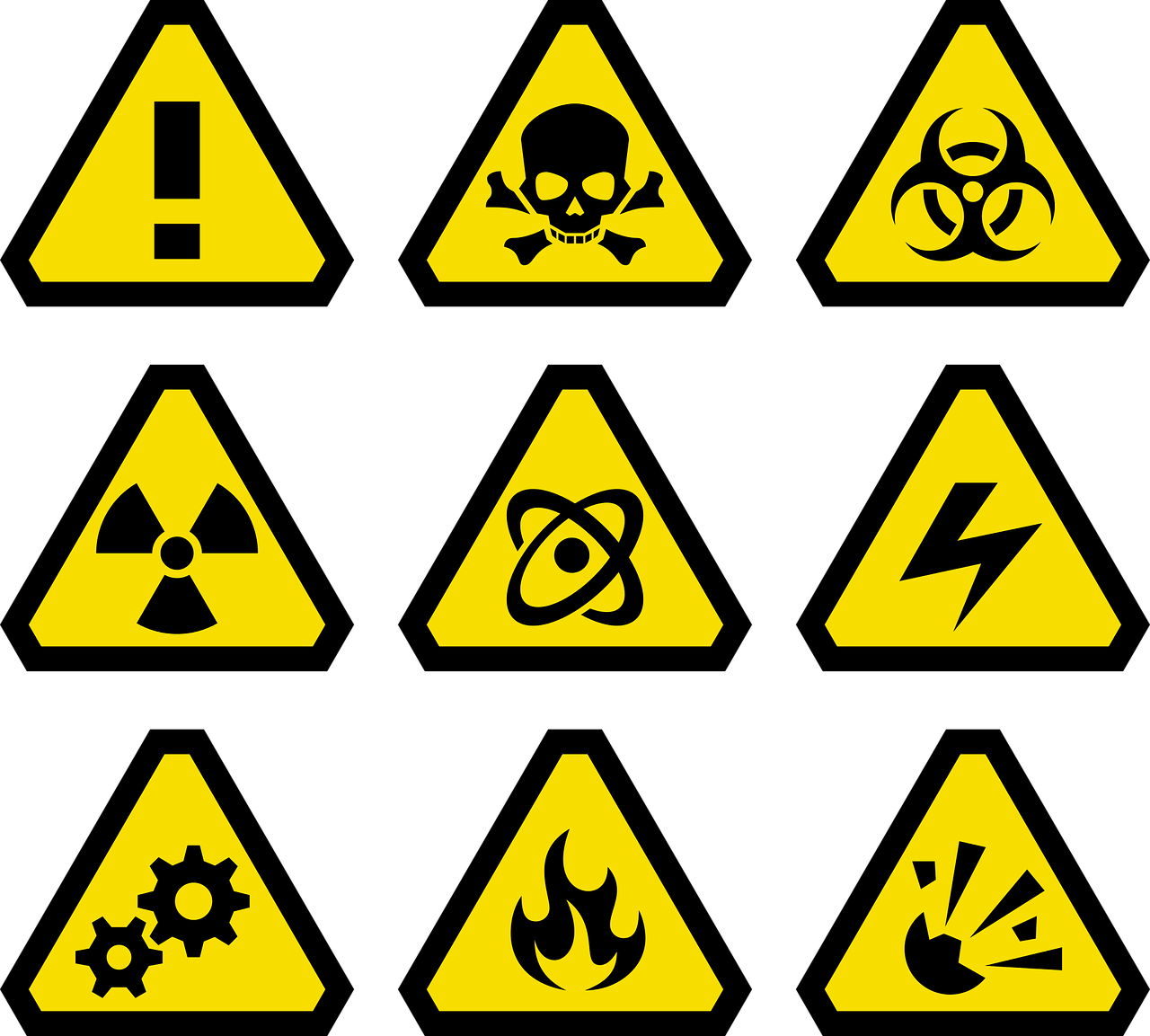Tox-Blog #7: Some basic concepts of toxicology (The toxicity of aluminum: Part 1) [English]
I love hot topics, and the toxicity of aluminum plays a central role in several battles around industrial food and vaccines. The perfect opportunity for me to jump into another debate.
You may also like:
Tox-Blog #1: Organic food | Tox-Blog #2: Glyphosate
Tox-Blog #3: Cinnamon | Tox-Blog #4: Aflatoxins
Tox-Blog #5: Coprine | Tox-Blog #6: Magic Mushrooms
Intro
Sadly, after starting about aluminum, I realized that I have to introduce some basic concepts of toxicology and risk assessment before I can write about it for real. So this post is not about aluminum at all, but you need to read it to understand my next post (that will be about aluminum, I promise).
In this post, I will explain to you what the difference between acute and chronic toxicity is, and I will show you strange-sounding concepts like LOAELs and TDIs. We will also learn how a governmental agency is setting lawful limits for poisons in food or drugs on the example of a chemical called para-trufflechocolateinoxide.
Hey, ho, let's go:

Before we can start putting signs on chemicals, there's a lot of science to do. Pic from Pixabay.
Dose dependency:
Probably the most important sentence to remember about toxicology (it is not only good to know, but also sounds incredibly educated, which is great if you want to impress some sapiosexual chicks) is this quote from Paracelsus:
dosis sola facit venenum
Which is Latin for: "Only the dose makes the poison".
Toxicity is always depending on the concentration of a poison. If we dilute it far enough, even something like radioactive plutonium will stop causing us harm.
Time dependency
It also makes a difference for how long and how often we are exposed to a toxin. Drinking 5 beers once while partying won’t do you much harm. Drinking 5 a day for 30 years probably will.
Thus, we discriminate between:
“acute” toxicity
which describes an immediate poisonous effect, caused by a single dose of a compound. For acute toxicity, researchers use animal studies to establish a so-called "LOAEL" (Lowest observed adverse effect level), which is defined as the lowest concentration at which a poison is producing an unhealthy effect.
"chronic” toxicity
which are adverse - often irreversible - effects of a long-term exposure to a compound, e.g. if you ingest a certain amount of aluminum every day. Chronic toxicity is much harder to assess than acute toxicity, for it often produces effects after several years of exposure. Researchers will again use animals for testing and give them a small toxic dose each day for a longer period of time, but the validity of those experiments is limited – the animals used in the lab simply don’t live as long as humans do and thus we can’t study all possible long-term effects on them. But for what it’s worth, chronic LOAELs are established from that models as well.
The TDI concept
Health agencies around the globe have to regulate hazardous stuff, and so they have to define an amount of a potential toxin that a person can take up per day without experiencing any negative outcome. We call that value TDI, which stands for tolerable daily intake.
In other words, it is the daily amount of a chemical which is considered safe to consume.
For acute poisons, the calculation of a TDI is pretty straight forward, because they have an established LOAEL for several species of animals. Of course, humans might react worse than animals, but not much worse. So they divide the LOAEL of the most sensitive animal by 10 to account for that.
The TDI is then a tenth of the LOAEL.
Yeah I know. Super scientifically correct. But tell us an alternative!
For chronic poisons, the situation is worse, because our scientific models give us much less reliable data, as described above. So the agencies take the weekly LOAEL from the long-term studies, divide it by 10, and then they divide it by 10 again.
The TWI (tolerable weekly intake) is then a hundredth of the LOAEL.
In case that small children are exposed, or the toxin is suspected to cause something really dangerous like cancer, they’ll take extra security and divide it again (TWI=0.001*LOAEL).
Calculation of a lawful limit
Now, the last step before lawful limits for a chemical (for example in food) can be established is to estimate the human exposure to it. If a compound will be found in Swiss truffle chocolate, and only in Swiss truffle chocolate, the chances that you will take in high amounts of it are much lower than if the compound is found in bread, corn, rice, milk, cheese, coffee and beer. And wine. And liquor.
So when calculating a lawful limit, an agency takes into account its TDI for acute toxicity, its TWI for chronic toxicity and it applies those to a fictional “high-risk” population that eats a whole bar of truffle chocolate per day, and in that way, a lawful limit for the concentration of our toxin, let’s call it para-trufflechocolateinoxide, in the product, is established.

Hmmm, chocolate. Sweet, toxically delicious chocolate. from pixabay.
Accounting uncertainties and ALARA
As I wrote above, the models to predict the toxicity of a compound, in particular the chronic toxicity, are error-prone, due to the necessary extrapolations.
So after some years have passed with the limit for para-trufflechocolateinoxide (from now on “p-TCO”) in place, researchers will conduct so-called epidemiologic studies, which means they compare people eating Swiss truffle chocolate with people not eating it. And if they find increased cancer rates among the chocolate junkies, media hell is breaking loose.
But of course, even then, things are not so easy. The real p-TCO might not only be found in one distinct type of food, but in hundreds. People might react differently to p-TCO. p-TCO concentrations might correlate with the concentrations of other compounds in food, or the uptake correlates with other risk factors for cancer etc. (e.g., a classic case of a risk factor correlating with the uptake food toxins is overweight).
There is a lot of noise in epidemiologic studies, and sadly there are many studies that are conducted in a very weak way, looking at far too less people and not taking into account other contributing factors.
But if there is at one point enough data that suggests that p-TCO really causes cancer, the lawful limits are adjusted according to the new results. For cancer-promoting chemicals, there is also a principle called ALARA: That means manufacturers are then requested to reduce the levels of e.g. p-TCO to concentrations as low as reasonably achievable.
Conclusion
You now know what the terms acute and chronic toxicity mean, how LOAELs, TDI/TWIs are calculated and how a lawful limit for a toxin can be established.
And you also have learned that establishing limits is no exact science. We have to use security factors and to extrapolate from limited models. Any compounds in your food should be 10-1000 times less concentrated than they would have to be to exert harmful effects by law.
But due to the uncertainties of our scientific models, agencies are sometimes off by more than a factor of 10-1000. So we constantly reassess old data and we adjust lawful limits if newer results suggest the current limits are not low enough.
Sources:
a review: “Background to the ADI/TDI/PTWI”
Lecture: “Toxicology” by Prof. Marko, University of Vienna
Disclaimer: In my blog, I'm stating my honest opinion as a researcher, not less and not more. Sometimes I make errors. Discuss and disagree with me - if you are bringing the better arguments, I might rethink.
Being A SteemStem Member
If this is just the pre-face to the aluminum post.. Well, I am looking forward to the aluminum post! Cheers!
Take some Iodine to do pre-detox before reading about that heavy metal :D
Seriously, it exists: link
And lose some weight along the way lol... Cheers
Great summary of the terms. However, I think I noticed a mistake. When talking about TWI you write:
Correct me if I'm wrong and if I misunderstood something, but I think you meant to say TWI.
you're absolutely right, ty! I'll correct it.
I started with a series a little like this (debunking stuff) and have to say I much prefer yours over mine.
a humble man ;-)
Great. Very informative. Me, too!
Danke dir!
Hello, as a member of @steemdunk you have received a free courtesy boost! Steemdunk is an automated curation platform that is easy to use and built for the community. Join us at https://steemdunk.xyz
Upvote this comment to support the bot and increase your future rewards!